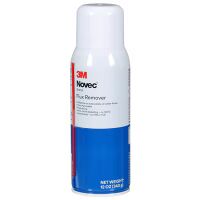Difference between revisions of "Solder"
(→Flux) |
(→Flux) |
||
| Line 11: | Line 11: | ||
File:Flux-Chart.png|The chart looks interesting. I'm not sure if it's accurate or not yet. | File:Flux-Chart.png|The chart looks interesting. I'm not sure if it's accurate or not yet. | ||
</gallery> | </gallery> | ||
| + | |||
| + | ===Cleaning Flux=== | ||
| + | [[File:Novec flux remover.jpg|thumb|200px|3M's Flux Remover. Has a shelf life.]] | ||
| + | There are products you can buy. E.g. 3Ms novec stuff (may have PFCs, I have to check the MSDS). IPA never works. What to use will depend upon what solder you use. I would assume that trying to sell universal 'flux remover' is like trying to sell universal 'petroleum remover' in which case, there will be all kinds of traps and variations depending on what actual flux you are using. Make sure whatever you buy doesn't give you a headache (some of the cheap MG stuff did that to me). | ||
==Tips/Techniques== | ==Tips/Techniques== | ||
Revision as of 03:20, 20 April 2024
Pronounced like 'soldier'. It may be tedious to solder, but you must solder on.
Flux
For starters, you can always get the pen fluxes from retail. Then there is the longer lasting but shelf-life-limited flux that Louis Rossmann uses. After that...
Another potential rabbit hole. As always, Keep it simple.
- https://www.eevblog.com/forum/beginners/flux-categories/ some good links which leads me to:
- https://resources.altium.com/p/what-they-dont-teach-you-about-fluxes - good general chemistry info. rule: check msds of your flux.
- https://www.pillarhouse.co.uk/technology/flux-choosing-the-correct-flux-type-technical-article this is a bit poorly written (i.e. bad grammar) but had the chart below.
Cleaning Flux
There are products you can buy. E.g. 3Ms novec stuff (may have PFCs, I have to check the MSDS). IPA never works. What to use will depend upon what solder you use. I would assume that trying to sell universal 'flux remover' is like trying to sell universal 'petroleum remover' in which case, there will be all kinds of traps and variations depending on what actual flux you are using. Make sure whatever you buy doesn't give you a headache (some of the cheap MG stuff did that to me).
Tips/Techniques
Silver in Solder
Nothing special is required for soldering to silver, however 2% silver solder has the advantage of being much stronger making it less likely to fail in applications where mechanical stress is present, like inside of a loudspeaker. See below about the Tektronix silver plated ceramic terminal strips.
Gold is a different matter. Above a certain percent, gold forms a brittle intermetallic with tin so special measures must be taken when soldering to thick gold plating. Typically the gold plating is removed before soldering. Flash gold plating is thin enough that it will dissolve completely into tin containing solders so that this is not a problem. Adding silver to the solder will not help with soldering to gold.
Quote from: johansen on February 18, 2024, 09:25:29 pm
Iirc 2% silver is probably not enough silver for the silver plated ceramic terminal strips in some applications.
I think Tektronix used 4% silver, which was required to keep the silver from dissolving from the ceramic terminal strip leaving the soldered joint unattached. 2% silver is better than nothing when making repairs on these terminal strips.
Soldiering a USB C connector (without visible pads)
USB C is busywork for EE / hackers. USB != UPB. https://www.youtube.com/watch?v=FvIWlAxXpQs He has some tips about equipment to use. Desoldering gun, some kind of hotplate (you can use any hotplate), uses a thermocouple to check board temperature (good idea), what soldering wick, and general procedure for heating the board before attempting the actual desoldering. Of course usb c ends up being a job for hot air.

